Thai spring rolls are crispy, crunchy crowd pleasers! So easy to make and full of flavour – you won’t want to stop at just one! Make up a big batch to enjoy now with plenty leftover to freeze for later.
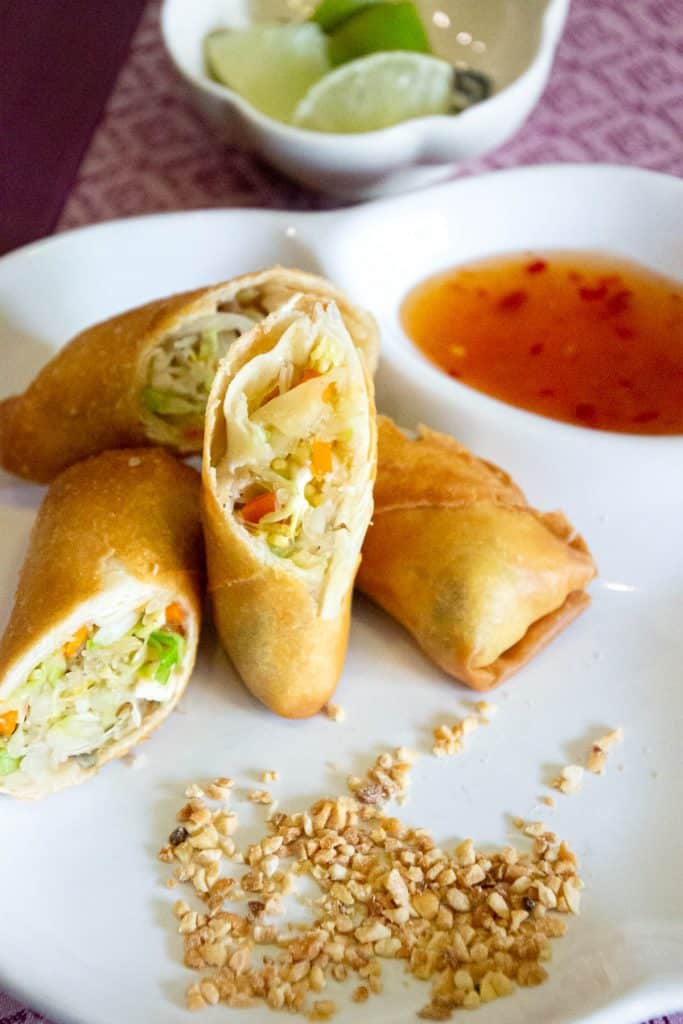
Why We Love This
Thai spring rolls are so easy to make and taste way better than store-bought, with crispy, crunchy outsides and a delicious homemade filling.
You can easily make a big batch of Thai spring rolls in advance, freeze and cook straight from the freezer in a wok, deep fryer or air fryer. Or use them as a crispy topping on Vietnamese noodle salad!
It’s cheaper to make your own than it is to buy them as take out / takeaway. Plus, you can adapt the recipe to suit your preferences or use up leftovers out of the fridge.
Whether you make them to perfection or end up with a few lumps and bumps – it doesn’t matter! They’ll taste delicious and you can be 100% proud that you made them yourself.
Related: Thai Panang Curry / Thai Choo Chee Curry / Vietnamese Fried Spring Rolls
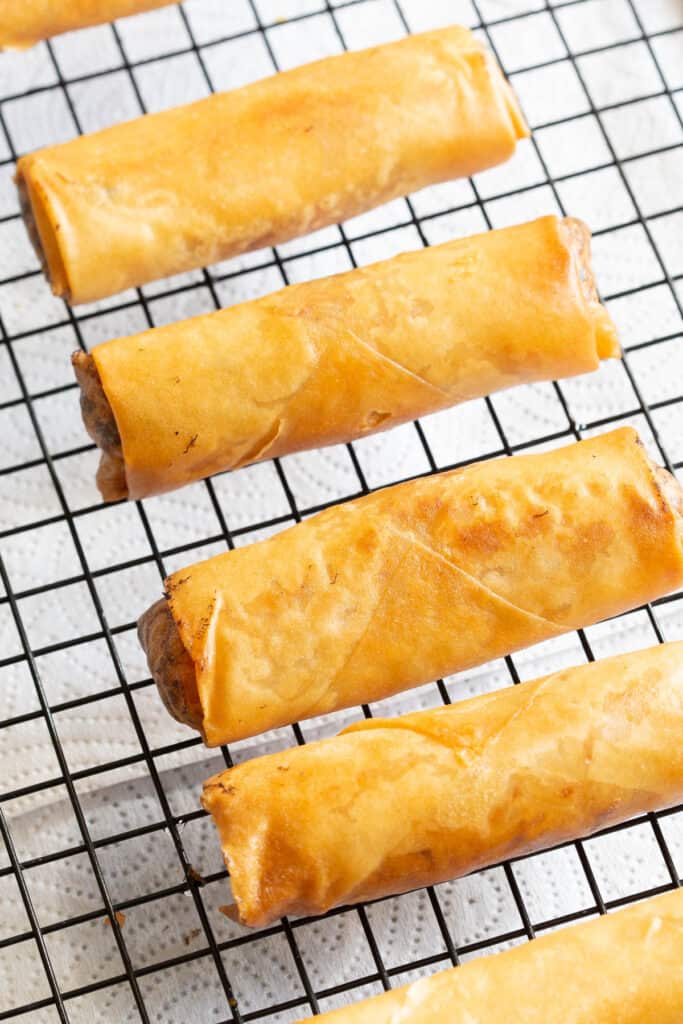
What are Thai Spring Rolls?
Thai spring rolls (เปาะเปี๊ยะทอด – pronounced paw phia tawd or poh pia tod in Thai) are a type of fried spring roll very similar to Chinese or Vietnamese fried spring rolls. The main differences are in the filling ingredients, type and size of wrapper and the choice of dipping sauces they’re served with.
Spring rolls are the perfect starter or side dish if you’re planning to cook up an Asian-inspired feast. They’re also a popular option for Vietnamese noodle bowls.
What You’ll Need
Here are the main ingredients you’ll need for your crispy Thai spring rolls! Remember, there are no hard and fast rules for the fillings, so feel free to mix and match according to your personal taste, or to use up ingredients you have on hand.
- Wrappers – We use 8 in / 20 cm frozen spring roll pastry / spring roll wrappers. Look for them in the fridge or freezer at Asian groceries or some supermarkets. They are thinner than egg roll or wonton wrappers, giving you a smoother appearance and better crunch once cooked. You can substitute with egg roll wrappers, wonton wrappers or even rice paper wrappers if you can’t find spring roll wrappers. (Note: Rice paper wrappers would need to be dampened with a little warm water so that they become flexible enough to fold – for more info check out our Vietnamese spring rolls). The texture will be slightly different if you use a different style of wrapper, but they will still be thoroughly delicious!
- Chicken Mince – Sub with pork, beef, finely chopped prawn / shrimp, tofu or even a mix of chicken and shrimp.
- Veggies – This recipe uses a mix of fresh bean shoots, shredded or julienne carrot, spring onion / green onion and chopped baby corn. It’s also a great way to use up any leftover veggies in the fridge, such as cabbage, spinach, mushrooms, red capsicum / bell pepper etc.
- Glass Noodles – Also known as mung bean vermicelli or cellophane noodles. These are thin round noodles made from mung bean flour that become transparent when cooked. You can can find them online, at Asian groceries or even well-stocked supermarkets.
- Seasonings – You’ll need fish sauce (sub with soy sauce or salt to taste), oyster sauce, garlic and sugar for the classic Thai flavour in these spring rolls.
- Vegetable Oil – We recommend canola oil for frying which is cheap and has a neutral flavour, so it won’t detract from the delicious flavour of your wrapper and fillings. It also has a high smoke point, making it perfect for frying spring rolls nice and hot without smoking out the kitchen.
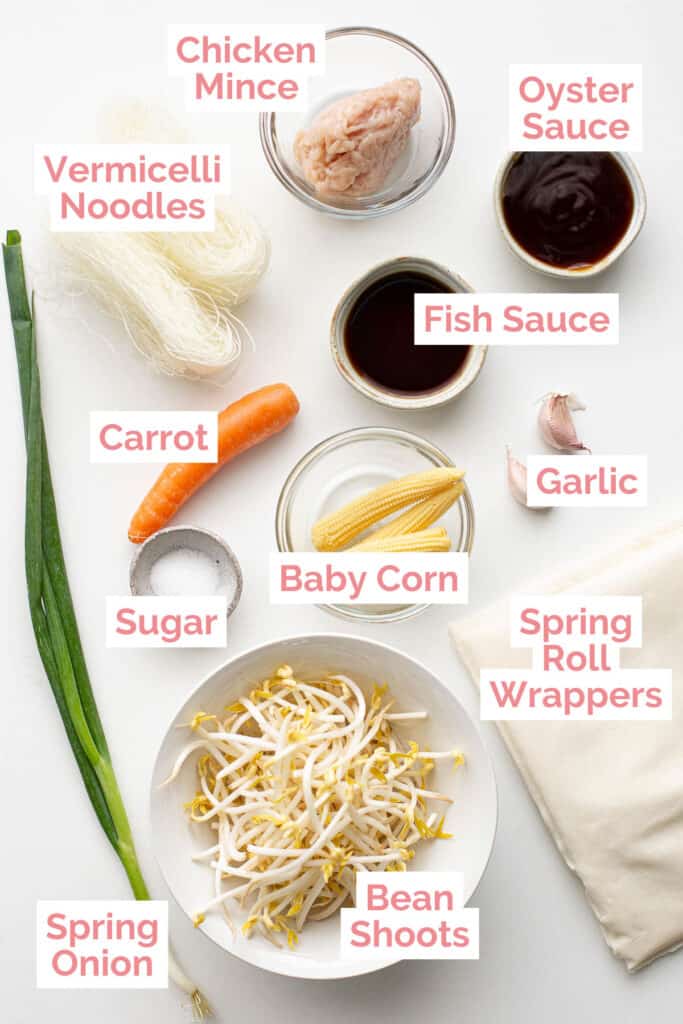
How to Make Thai Spring Rolls:
Fry the filling:
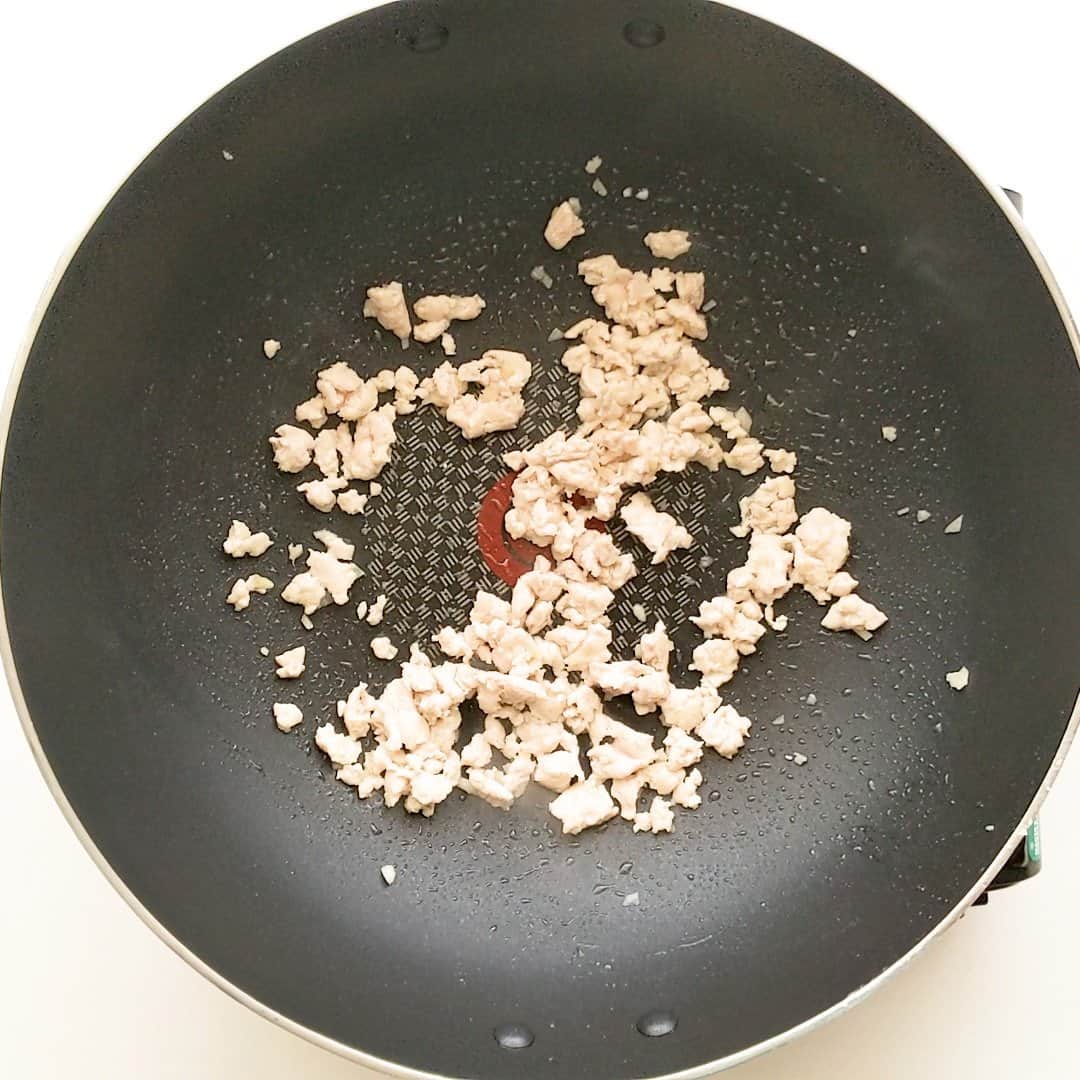
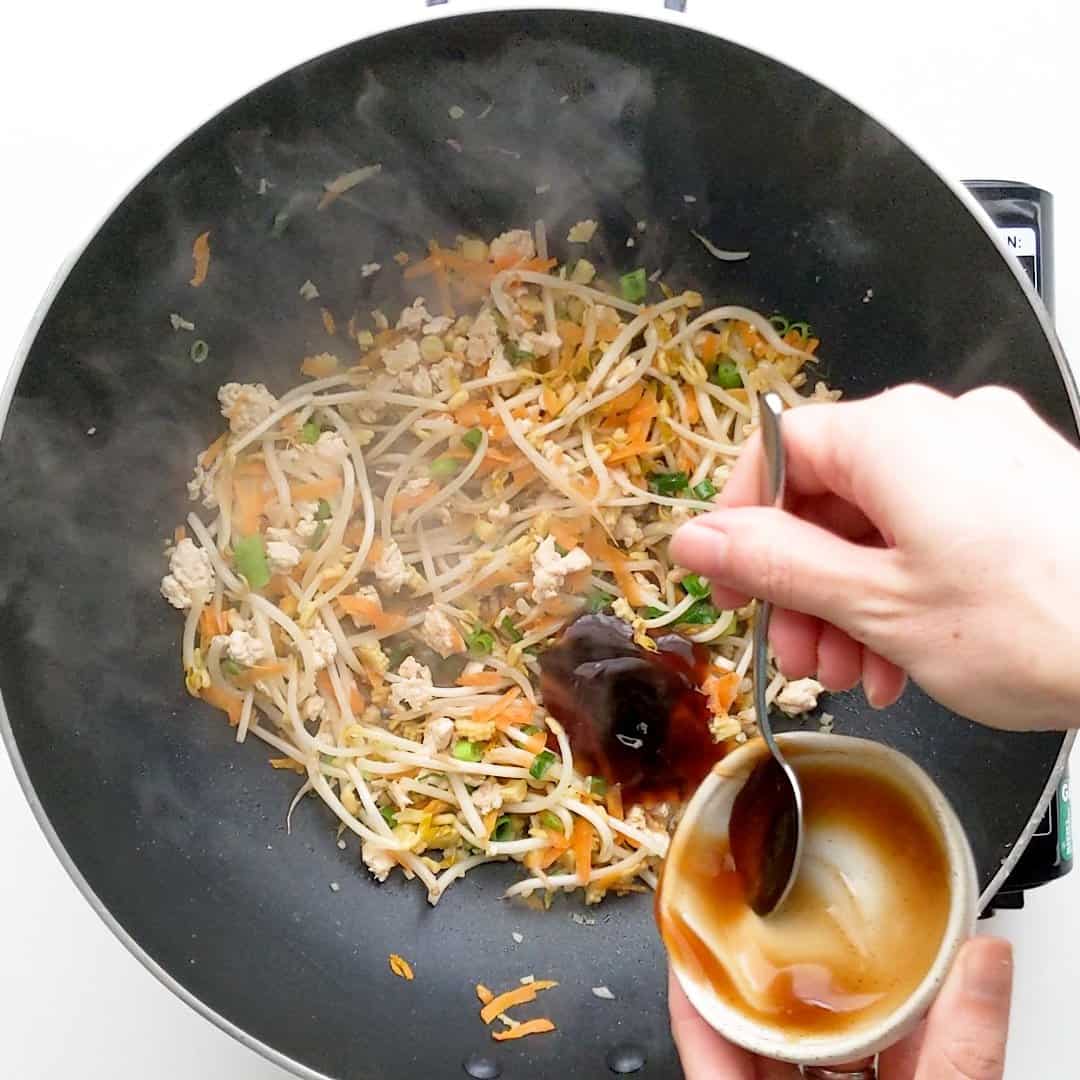
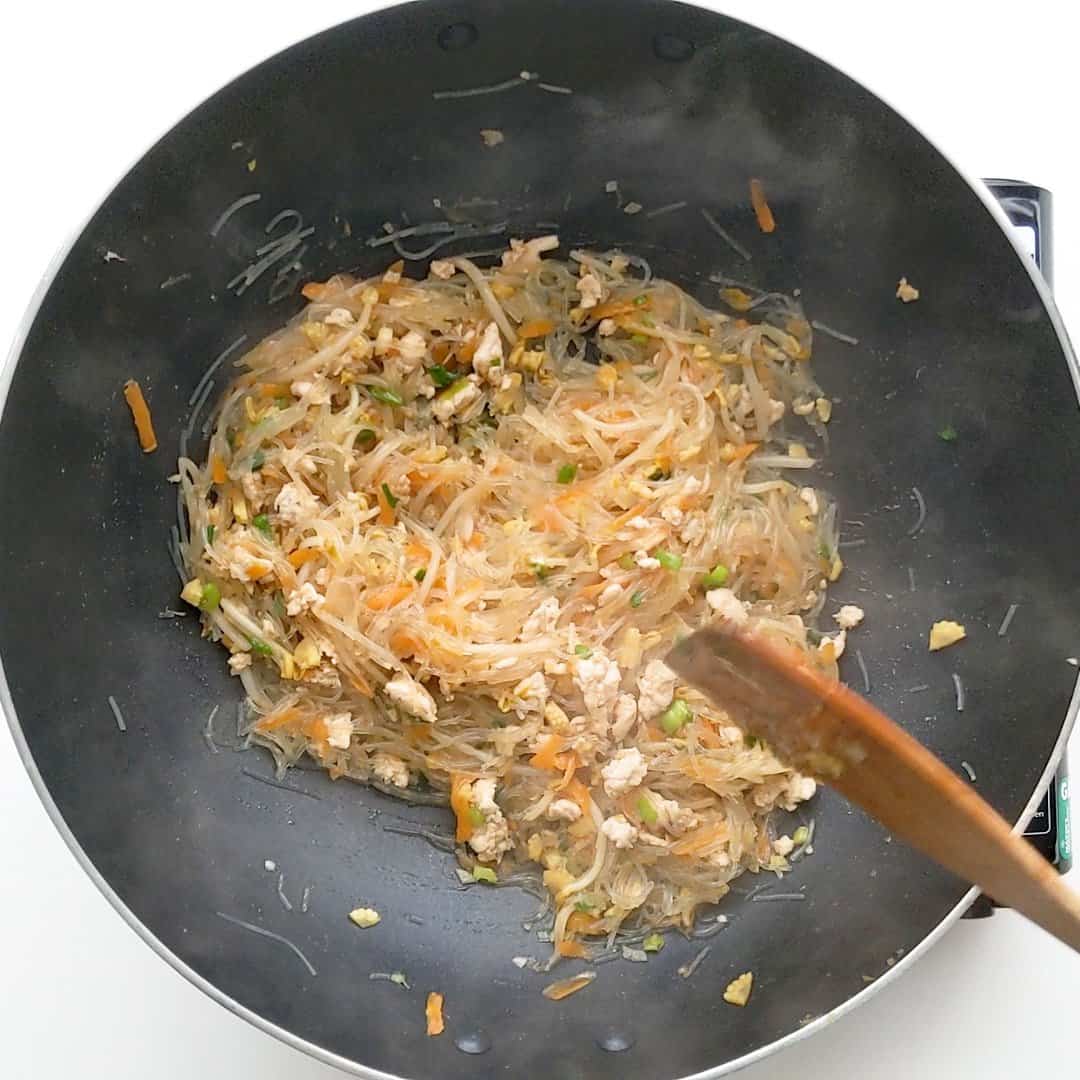
- Heat the vegetable oil in a large wok over medium heat. Add the garlic and cook until fragrant, then add the chicken mince and stir fry until cooked through (around 2-3 minutes).
- Add the bean sprouts, carrot, baby corn and spring onion and stir fry until veggies have softened. Then add the fish sauce, oyster sauce and sugar and stir through.
- Finally add the glass noodles and stir through until ingredients are evenly mixed and the liquid has mostly evaporated.
Assemble and fry the Thai spring rolls:
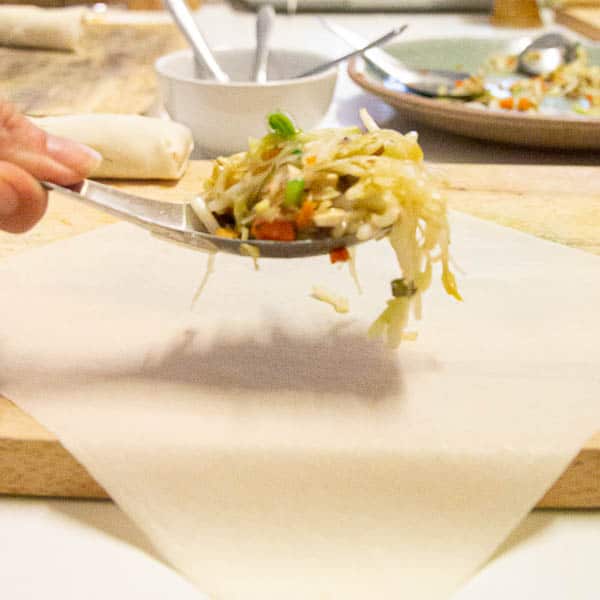
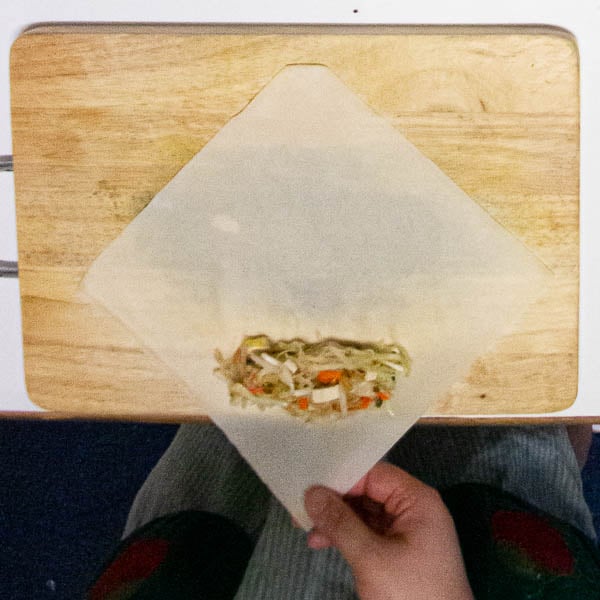
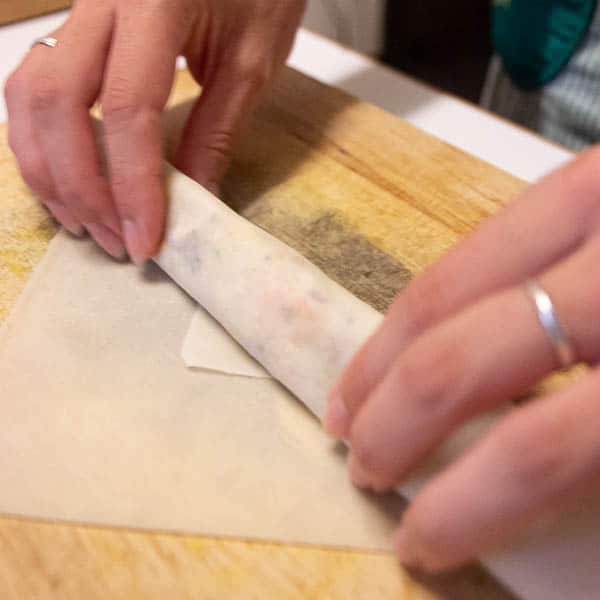
- Lay out one spring roll pastry or wrapper on a clean surface (smooth side down). If using a square wrapper, have one of the corners facing towards you.
- Place a scoop of filling in one corner of the wrapper.
- Fold the bottom corner of the wrapper up and over the filling, pressing in firmly to remove any air pockets. Keep rolling up to the centre of the wrapper.
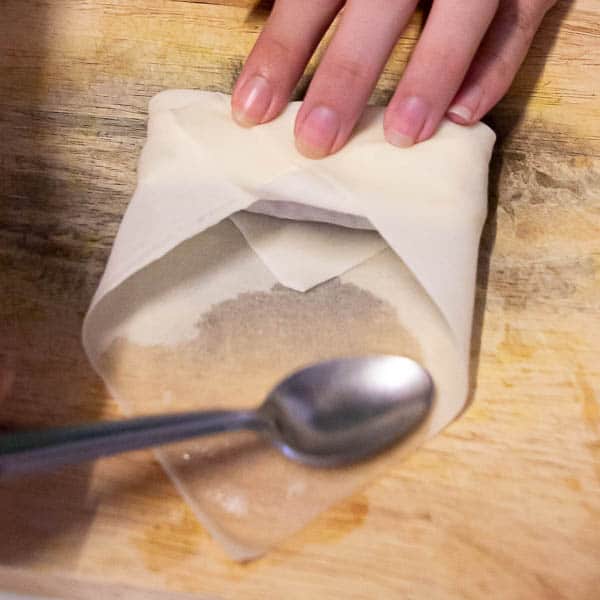
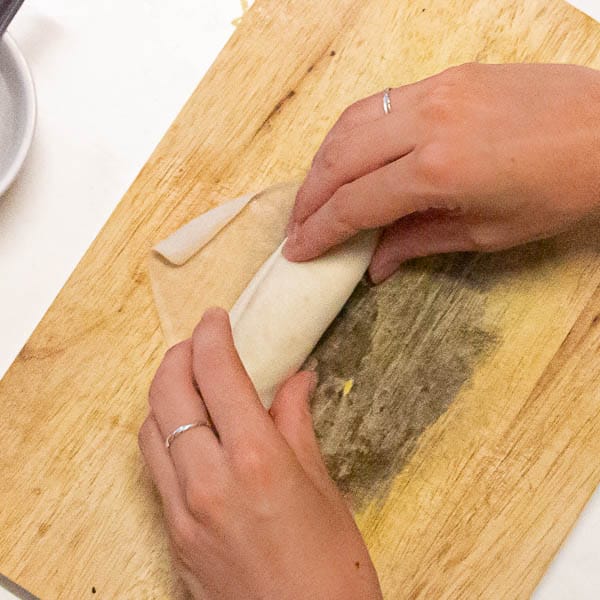
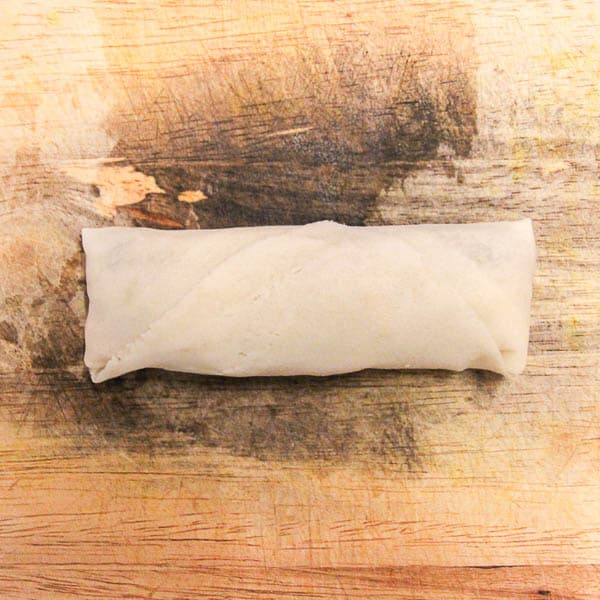
- Rub water over the top edges of the wrapper, then fold in the left and right sides and keep rolling up tightly.
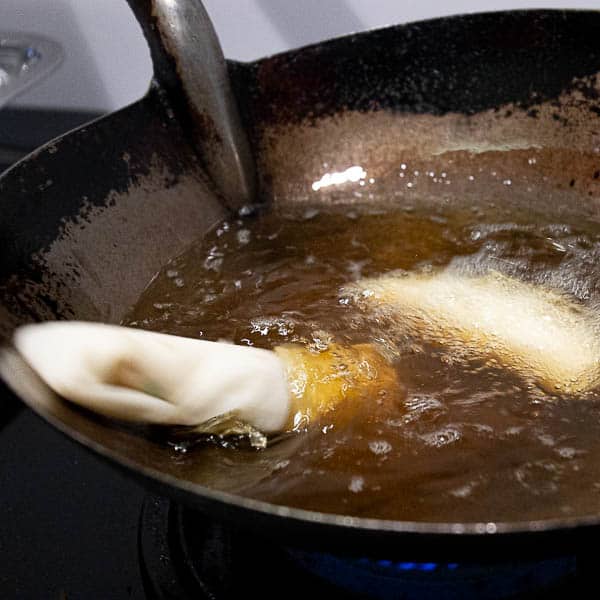
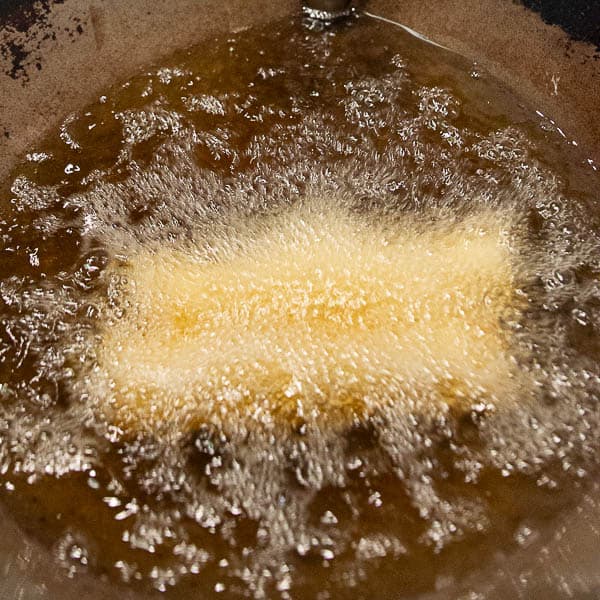
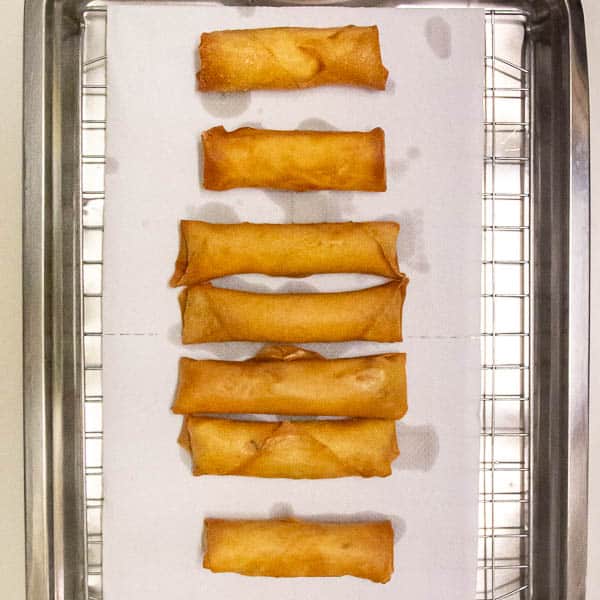
- Heat the canola oil in the wok over a medium heat, ready to deep fry. Slide each spring roll into the wok slowly to avoid splashing.
- Deep fry until golden brown, around 4-6 minutes.
- Transfer to a strainer or place on paper towel to drain the oil.
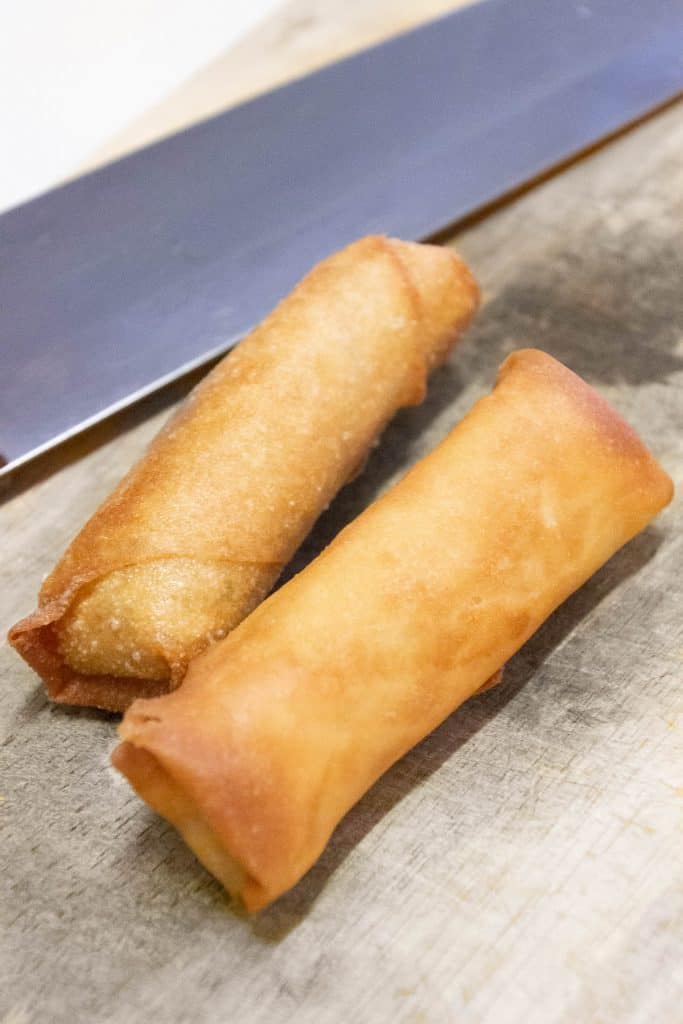
Wandercook’s Tips
- Veggies – Chop the carrots by hand, julienne-style, or use a mandolin or handheld vegetable slicer with a julienne tip. It’s best to avoid grating the vegetables as this will release too much moisture. Dry filling makes for better looking, crispier spring rolls.
- Noodles – You can use kitchen scissors to cut the glass noodles into more manageable lengths so your filling mixture is easier to work with.
- Filling – Make sure the filling has cooled down before wrapping. If it’s still too warm, the steam will make the wrappers softer and harder to wrap neatly. Avoid over-stuffing your rolls as they could break apart while deep frying.
- Wrappers – Open the wrapper packaging only once you’re ready to start assembling. This will keep them fresher and more pliable, and stop them from drying out. You can cover the remaining wrappers with a kitchen towel (moist – not wet) in between wrapping each spring roll.
- Rolling Up – Try to roll up each spring roll tightly so there’s no air pockets or empty space, otherwise they can soak up too much oil when cooking and this would spoil the taste. Seal with plenty of water, and they’ll hold their shape perfectly!
- Cooking – Slide each roll gently and slowly into the hot oil so there’s no splashing. If you’re using a wok, you can place the roll upright against the edge of the wok and allow it to slide in with gravity.
- Slicing – To slice your spring rolls in half without the shells cracking everywhere, make a small slice in the centre of the roll using the tip of your knife, then press down gently with the blade until you slice all the way through.

FAQs
Yes, just place uncooked spring rolls in a single layer on a tray with plenty of space around each so they don’t stick together. Pop them in the freezer for half an hour or so until they start to harden, then transfer into a bag or container. This stops them from freezing together and tearing when you try to pull them apart. Use them up within 1-2 months for the freshest flavour.
The main difference is in the wrapper. Spring roll wrappers (made from wheat) are thin and crispy, while egg roll wrappers (made with egg) are chewier and tend to be greasier once cooked. Egg roll wrappers also tend to bubble up when cooked in hot oil, rather than being smooth. We don’t have egg rolls in Australia, but they are similar (in essence, if not in execution!) to a fast-food item we can buy here called Chiko Rolls.
Spring roll pastry (used in this recipe) is a wheat based product while rice paper is (you guessed it) made from rice. The texture is very different – as is the cooking method. If you’re only have rice paper wrappers, use the method outlined in our Vietnamese Rice Paper Rolls or vegetarian rice paper rolls (also known as fresh spring rolls) instead.
Variations
- Make Them Spicy – Add thinly sliced Thai red chillies to your filling mixture. Or mix up the flavour with gochujang paste or gochugaru chilli flakes to taste.
- Mix Up the Flavour – Add aromatic herbs like coriander / cilantro or Thai basil, or mushrooms (regular, wood ear or enoki if you can source them). Try them with a splash of sesame oil or toasted sesame seeds for more nutty umami flavour.
- Air Fry Instead of Deep Fry – Cook for 5 mins per side at 200˚C / 390˚F. Optional brush them with oil or butter first for extra crispy wrappers!
Best Spring Roll Dipping Sauce Ideas
These spring rolls are so tasty on their own you don’t necessarily need a dipping sauce – but if you just love dipping, here are a few ideas:
- Hoisin peanut sauce
- Sriracha mayo or sriracha aioli
- Vietnamese dipping sauce (nuoc mam cham)
- Indonesian sweet soy sauce (kecap manis)
- Japanese unagi sauce or citrus infused ponzu sauce
- Gochujang mayonnaise
- Experiment and make your own! We recommend starting with a mix of soy sauce, rice vinegar, brown sugar, fresh or minced ginger, crushed garlic and a teaspoon of chilli flakes.
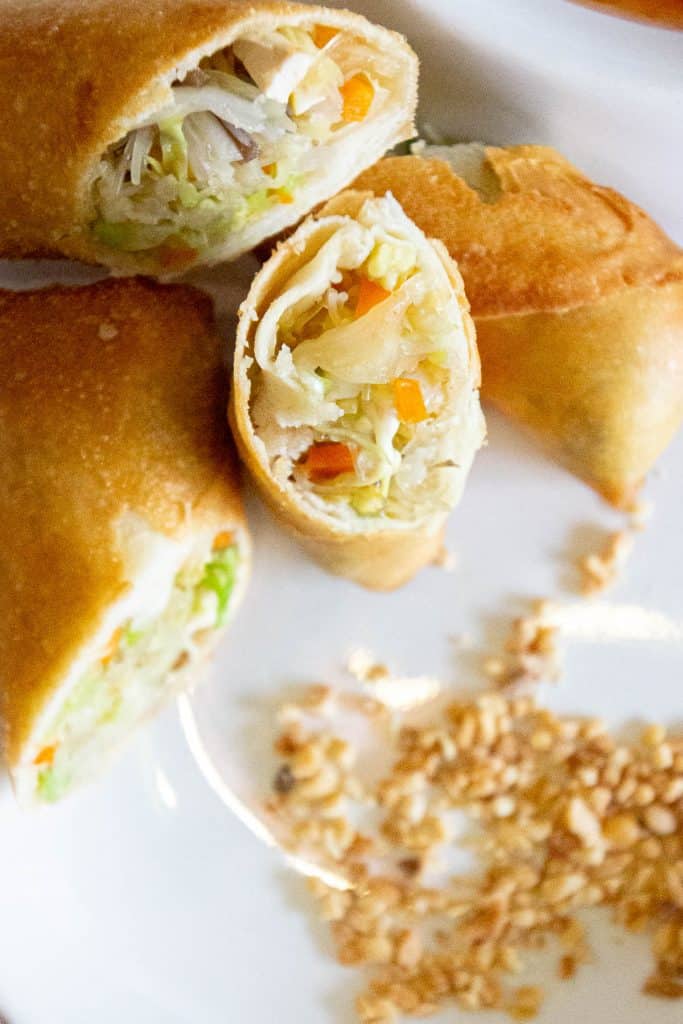
Looking for more deliciously easy Asian recipes? Try these:
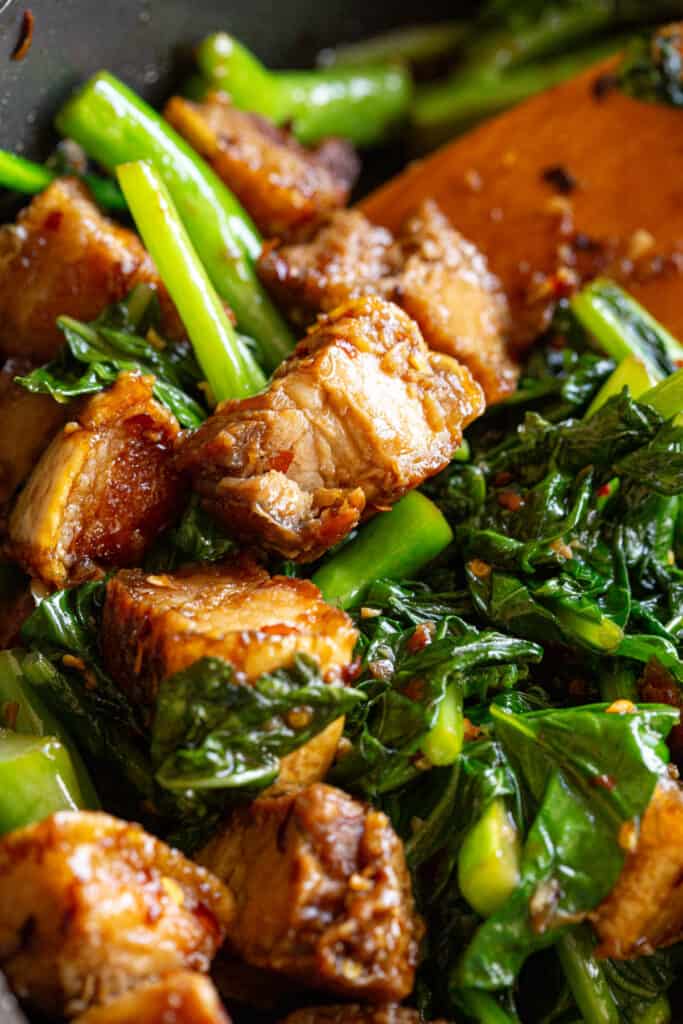
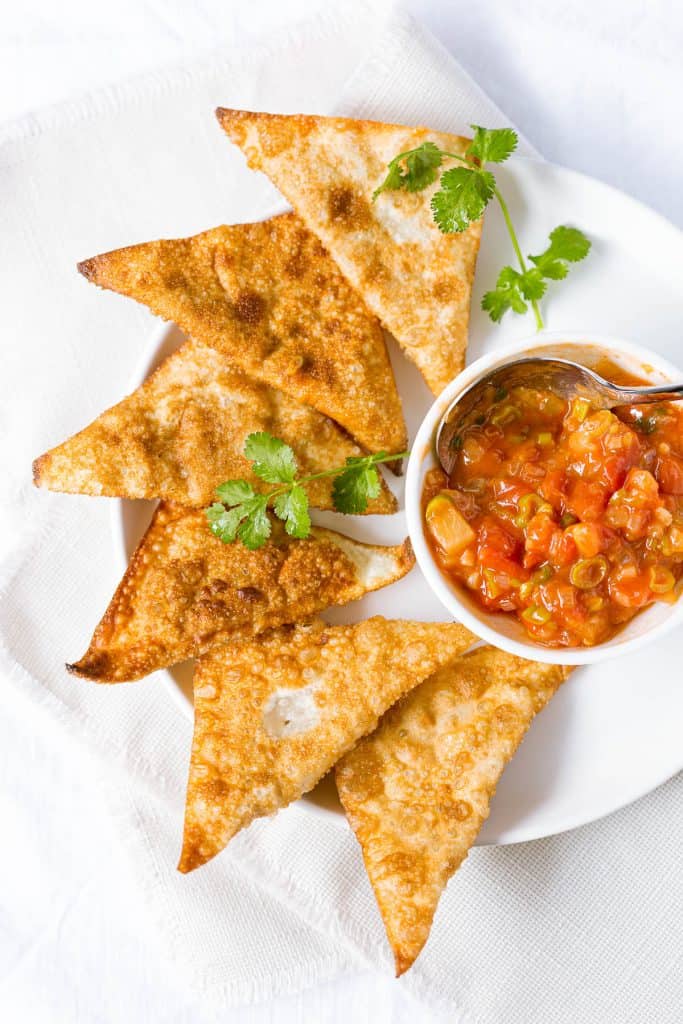
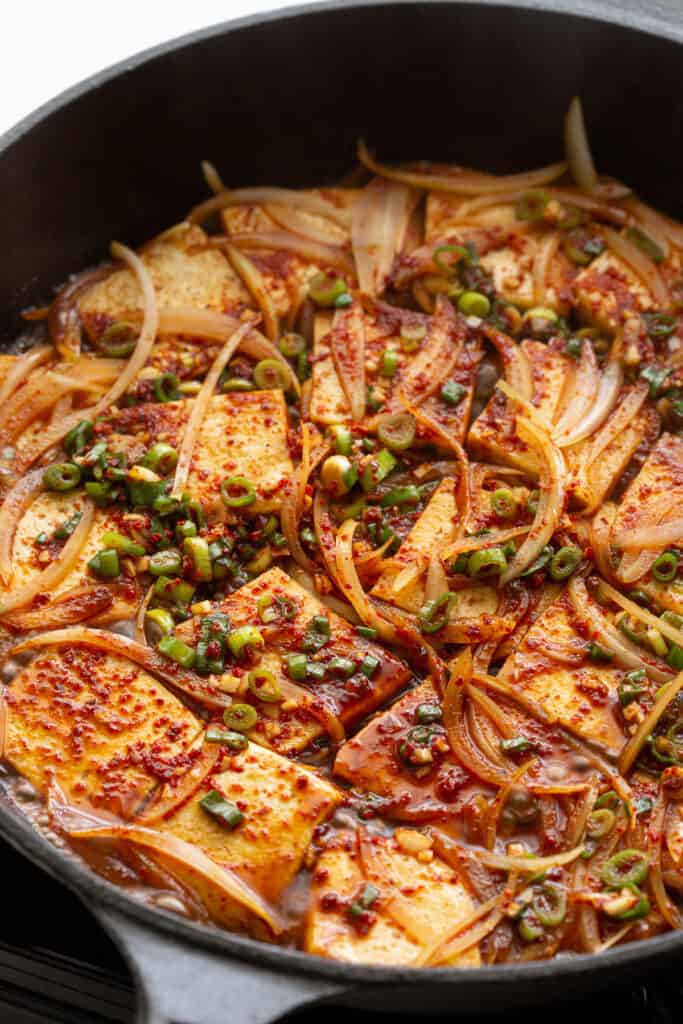
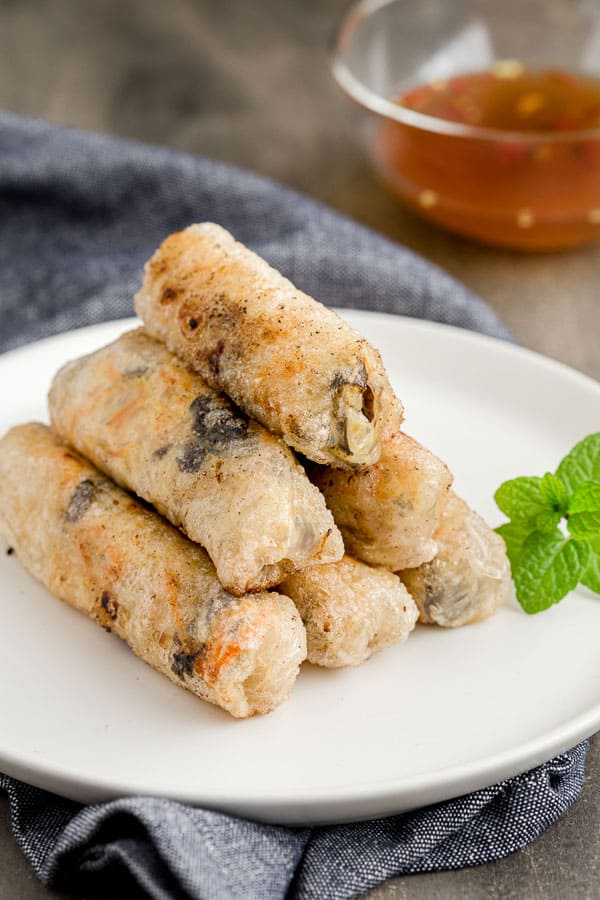
★ Did you make this recipe? Please leave a comment and a star rating below!
Ingredients
- 100 g glass noodles soaked and cut into 2 cm / 1 in lengths
- 100 g bean sprouts
- 100 g minced chicken
- 30 g carrot grated
- 30 g baby corn thinly sliced
- ¼ cup spring onion / green onion or Asian chives
- 1 tbsp garlic chopped
- 2 tbsp fish sauce
- 3 tbsp oyster sauce
- 1 tsp sugar
- 2 tbsp vegetable oil for the filling
- 4 cups canola oil for deep frying
- 5-6 spring roll pastry or rice paper wrapper
- water for sealing the rolls
Instructions
For The Filling
- Heat the vegetable oil in a large wok over medium heat. Add the garlic and cook until fragrant, then add the chicken mince and stir fry until cooked through (around 2-3 minutes).2 tbsp vegetable oil, 1 tbsp garlic
- Add the bean sprouts, carrot, baby corn and spring onion and mix thoroughly.100 g bean sprouts, 30 g carrot, 30 g baby corn, ¼ cup spring onion / green onion
- Add the fish sauce, oyster sauce and sugar and stir.2 tbsp fish sauce, 3 tbsp oyster sauce, 1 tsp sugar
- Finally add the glass noodles and stir through until ingredients are evenly mixed and the liquid has mostly evaporated.100 g glass noodles
To Assemble
- Lay out one spring roll pastry or wrapper on a clean surface (smooth side down). If using a square wrapper, have one of the corners facing towards you.5-6 spring roll pastry or rice paper wrapper
- Place a scoop of filling in one corner of the wrapper. Fold the bottom corner of the wrapper up and over the filling, pressing in firmly to remove any air pockets. Keep rolling up to the centre of the wrapper.
- Rub water over the top edges of the wrapper, then fold in the left and right sides and keep rolling up tightly.water
- Heat the canola oil in the wok over a medium heat, ready to deep fry. Slide each spring roll into the wok slowly to avoid splashing. Deep fry until golden brown, around 4-6 minutes.4 cups canola oil
- Transfer to a strainer or place on kitchen paper towel to drain the oil.
- Serve with your chosen dipping sauce such as nuoc mam cham.
Video
Recipe Notes
- Wrappers – We use 8 in / 20 cm frozen spring roll pastry / spring roll wrappers. Look for them in the fridge or freezer at Asian groceries or some supermarkets. They are thinner than egg roll or wonton wrappers, giving you a smoother appearance and better crunch once cooked. Open the wrapper packaging only once you’re ready to start assembling. This will keep them fresher and more pliable, and stop them from drying out. You can cover the remaining wrappers with a kitchen towel (moist – not wet) in between wrapping each spring roll. Sub with egg roll wrappers, wonton wrappers or rice paper wrappers if you need (Note: Rice paper wrappers would need to be dampened with a little warm water so that they become flexible enough to fold – for more info check out our Vietnamese spring rolls).
- Chicken Mince – Sub with pork, beef, finely chopped prawn / shrimp, tofu or even a mix of chicken and shrimp.
- Veggies – This recipe uses a mix of fresh bean shoots, shredded or julienne carrot, spring onion / green onion and chopped baby corn. It’s also a great way to use up any leftover veggies in the fridge, such as cabbage, spinach, mushrooms, red capsicum / bell pepper etc. Chop the carrots by hand, julienne-style, or use a mandolin or handheld vegetable slicer with a julienne tip. It’s best to avoid grating the vegetables as this will release too much moisture. Dry filling makes for better looking, crispier spring rolls.
- Glass Noodles – Also known as mung bean vermicelli or cellophane noodles. These are thin round noodles made from mung bean flour that become transparent when cooked. You can can find them online, at Asian groceries or even well-stocked supermarkets. You can use kitchen scissors to cut the glass noodles into more manageable lengths so your filling mixture is easier to work with.
- Seasonings – You’ll need fish sauce (sub with soy sauce or salt to taste), oyster sauce, garlic and sugar for the classic Thai flavour in these spring rolls.
- Vegetable Oil – We recommend canola oil for frying which is cheap and has a neutral flavour, so it won’t detract from the delicious flavour of your wrapper and fillings. It also has a high smoke point, making it perfect for frying spring rolls nice and hot without smoking out the kitchen.
- Filling – Make sure the filling has cooled down before wrapping. If it’s still too warm, the steam will make the wrappers softer and harder to wrap neatly. Avoid over-stuffing your rolls as they could break apart while deep frying.
- Rolling Up – Try to roll up each spring roll tightly so there’s no air pockets or empty space, otherwise they can soak up too much oil when cooking and this would spoil the taste. Seal with plenty of water, and they’ll hold their shape perfectly!
- Cooking – Slide each roll gently and slowly into the hot oil so there’s no splashing. If you’re using a wok, you can place the roll upright against the edge of the wok and allow it to slide in with gravity.
- Slicing – To slice your spring rolls in half without the shells cracking everywhere, make a small slice in the centre of the roll using the tip of your knife, then press down gently with the blade until you slice all the way through.
Nutrition
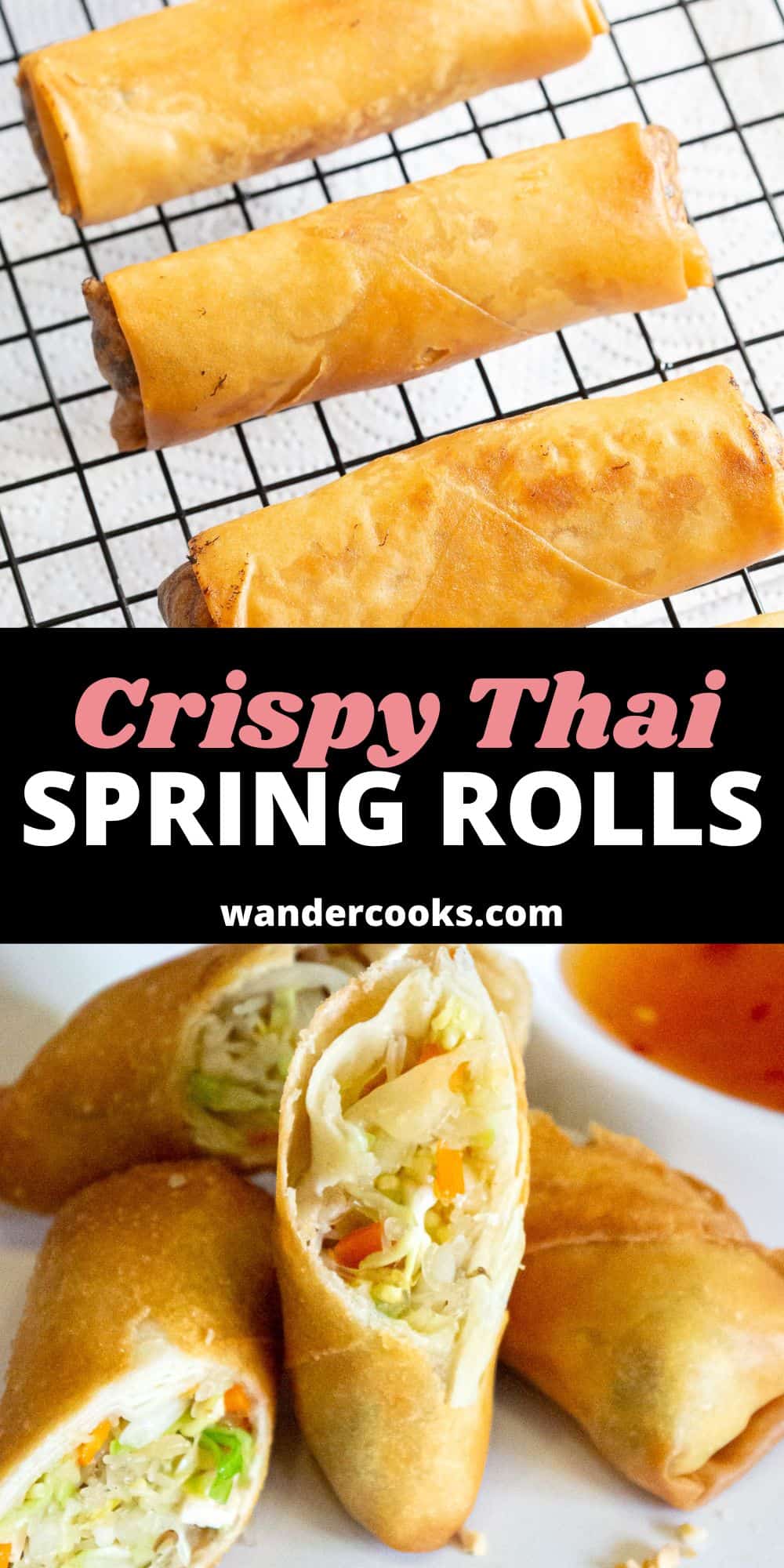

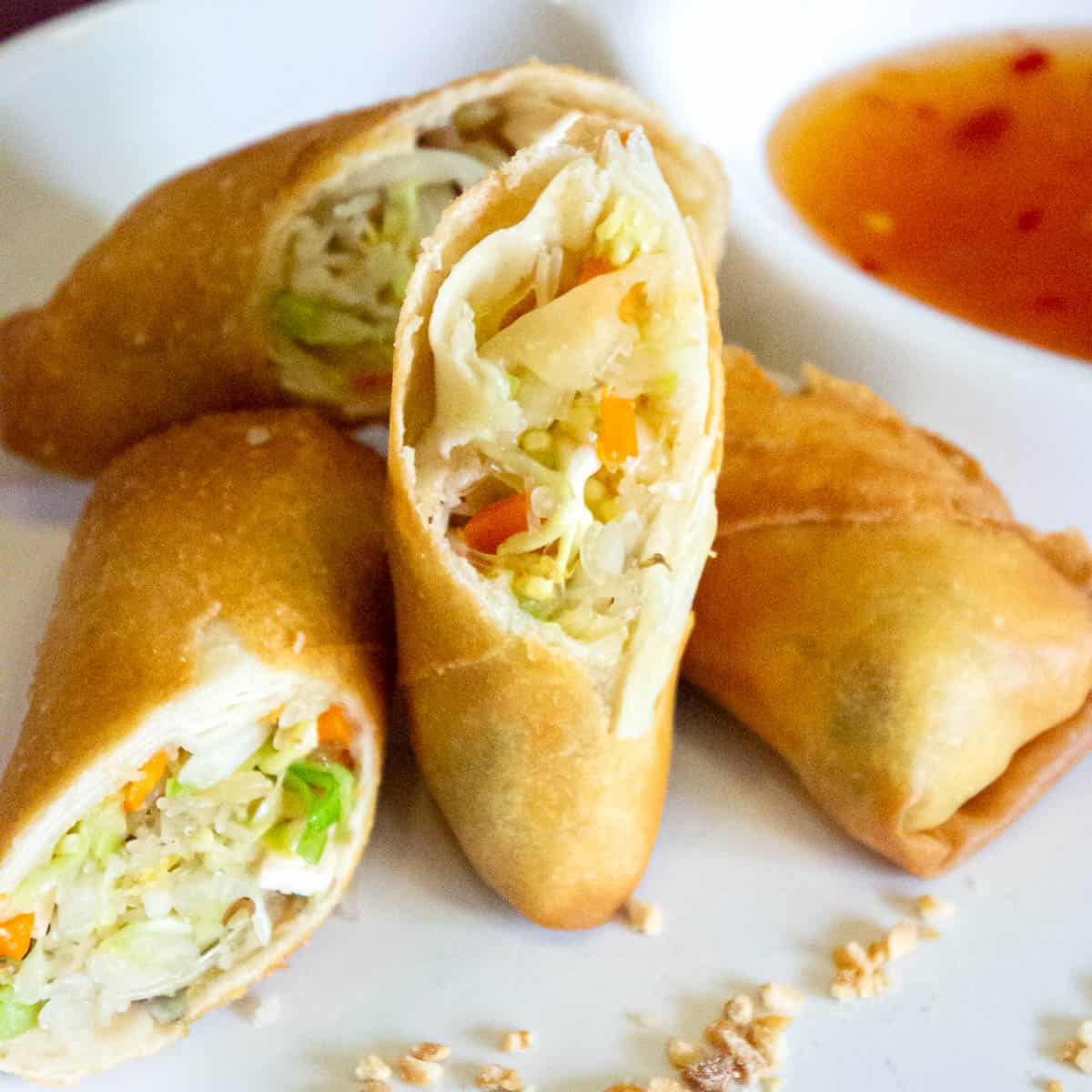



No Comments